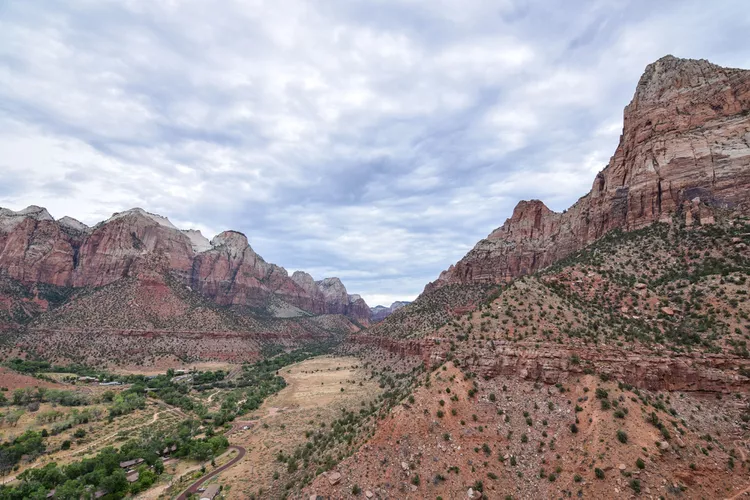1. Plan well ahead.
2. Guides make a difference.
3. Travel in the off-season.
4. Get up early (and go farther).
5. Opt for the less-traveled trail.
A-List travel advisor Mary Cropper points explorers to the best of the southwestern U.S., from lesser-known hikes to favorite viewpoints.
The wind-carved hoodoos of Bryce Canyon, the rainbow-rock mesas of Capitol Reef, the red-stone curves of Arches, the gorges of Canyonlands, and the soaring cliffs of Zion — Utah’s “Mighty Five” national parks spotlight and protect a mind-boggling diversity of ecosystems. However, finding the best way to explore them can be overwhelming for first-time visitors, as I have seen during my years as an A-List travel advisor.
However, with a little forethought and planning, a visit to all five parks provides the best opportunity to explore Utah’s natural playground. Here are a few tips I have learned from my own travels to help you make the most of your time.

1. Plan well ahead.
All national parks have seen a sharp uptick in visitors over the past few years. To protect the delicate natural landscapes, the park service has started enforcing strict limits on the number of visitors to certain areas. You’ll also need to secure specific hikes well ahead of time. For example, my favorite hike in Zion, known as the Subway, is limited to just 80 people a day, a tiny fraction of the 5 million who usually visit each year.
Moreover, the best hotels fill up quickly. If you have special requests, such as adjoining rooms for a family, you will need to plan even earlier.
2. Guides make a difference.
I always recommend doing at least a couple of guided tours. Not only will your guide handle all the logistics, including permits, but they will also add depth to your visit. The striations of a canyon wall become much more compelling when someone points to a layer and explains, “That was the fallout from the meteor that likely caused the dinosaurs’ extinction.” They can also inform you about the people who inhabited these areas for tens of thousands of years.
A guided tour can help you see the highlights of the park, even if you’re not up for a rigorous hike. Drivers are trained to minimize their impact on the parks’ landscapes while taking small groups around in 4x4s. If you are interested in some adventure, consider some rugged outings such as canyoneering, horseback rides, kayak tours, canoe trips, and whitewater rafting.

3. Travel in the off-season.
It can be tricky to appreciate nature’s majesty when you’re jostling for space among a throng of visitors. Families tend to visit in the summer, so you’re naturally going to encounter fewer people if you travel when school is in session. Additionally, spring and fall offer other advantages: wildflowers or changing foliage enhance the landscapes and wildlife is more active as it recovers from, or prepares for, the long winter ahead.
October is an ideal time to visit—the rusty red desert landscape contrasts beautifully with crisp blue skies, and the comfortable temperatures make hiking much more enjoyable.

4. Get up early (and go farther).
Those who rise early often enjoy the best views, and you’ll typically encounter fewer crowds if you can get an early start. For instance, Zion’s signature day hike is the Narrows, a strenuous route that takes you along the rocky bed of the Virgin River itself. The views from the bottom of the canyon are absolutely worth the effort, but the trail requires special gear due to hiking through running water. Most hikers get up early to rent a kit (typically including poles, water shoes, and Neoprene bibs for colder weather) from outfitters at the park’s gate. However, I recommend picking up the kit the night before and hitting the trail ahead of the crowds.
If you have the stamina, aim to hiking at least four miles before turning back—most casual hikers will fall away before that, allowing you to enjoy the scenery largely to yourself.

5. Opt for the less-traveled trail.
You can avoid a lot of the crowds simply by choosing a different trail. In Zion, instead of the Narrows, consider the Subway route, for example. Similarly, you can bypass the tough hike and crowds of Angel’s Landing (a knife-edge summit) by taking the gentler Scout Lookout, which offers the same stunning views without the same crowds or the need for a permit. Popularity can be fickle, often influenced by viral social media posts, and I find that I often enjoy the less-popular routes as much, if not more.
You might also consider spending more time in the smaller parks. While Zion attracts visitors as Utah’s main draw, the other four are equally charming. Capitol Reef tends to be overlooked, possibly due to the ease of exploring it by car; however, it’s worth spending the night there for a more comprehensive experience. This will provide you more time to explore ancient rock art and hike a wide variety of trails suitable for all abilities. In particular, I recommend visiting Waterpocket Fold, a geological wonder featuring buttes, bridges, and canyons that rival Zion’s landscapes. Another highlight is the Cassidy Arch hike, which is significantly less busy than the Mesa Arch hike in Canyonlands, yet I find it to be even more impressive.
Mary Cropper is a member of GoTravelDaily’s A-List of travel advisors and creates custom trips across the southwestern U.S. Contact her at 855-435-1621 or mary.cropper@audleytravel.com.





